The writer’s notebook is a bit of a romantic notion. At least it is for this millennial. Because at every tournament except the Masters, the only notes I take are in the Notes app on my iPhone. Augusta National, however, does not permit those god forsaken devices outside its media centre. So for one week a year, the romantic notion becomes a reality: pen and paper, baby. The old-fashioned way.
What follows are the scribbles from that notebook, which contain general musings and observations on the 2020 Masters Tournament. Please, do enjoy.
1. The last Major championship before this one felt so… divisive. Bryson DeChambeau bludgeoned his way to a US Open. Yes, I know, he also chipped and putted well, but the days after were spent debating the future of golf. It was tiring, that conversation. It still is. And distance debate aside, DeChambeau himself is a bit of an enigma. He’s honest and he’s smart, but on the golf course he veers towards slow and petulant. Some people love him, and some people very much do not love him. He’s polarising.
Dustin Johnson’s victory, by contrast, was a breath of fresh air. Among his peers, DJ is not only admired for his talent, he’s genuinely liked. He’s kind and he’s friendly, not the type to gossip or say nasty things about other people, even under his breath. A stand-up guy. That earnestness also comes off to fans and media, who seemed to share a consensus that DJ deserved another Major championship. Too good a player to finish his career with just one, too good a guy to suffer through heartbreak after heartbreak.
It got dicey for a minute there yesterday, when he bogeyed the fourth and fifth holes and the four-shot lead shrunk to one. The golf world’s collective heart rate increased. Not again. Come on, DJ. He didn’t make a bogey the rest of the way, eventually cruising to a five-shot victory. Thoroughly deserved, and universally approved. For one night, at least, the golf universe can agree on something.
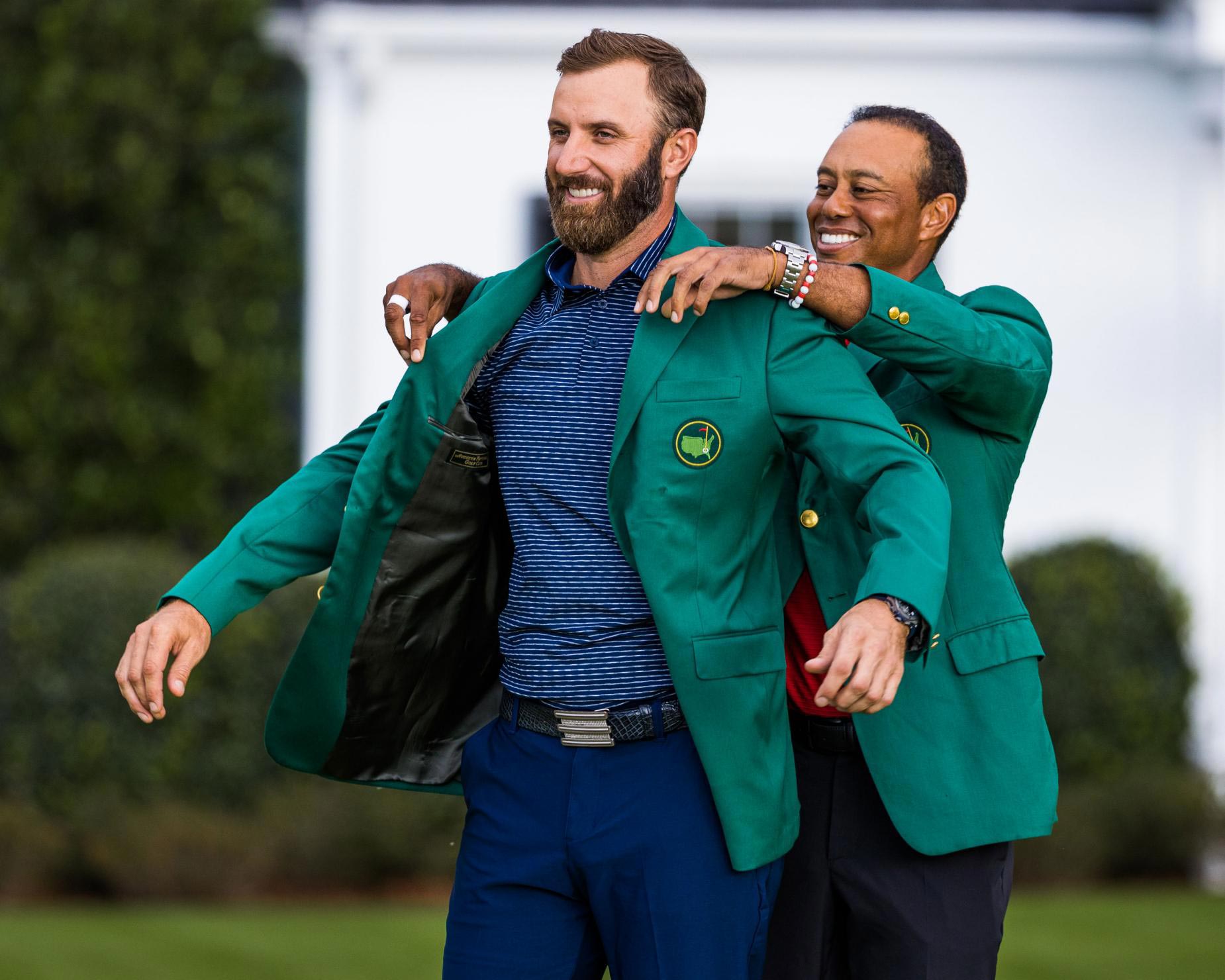
2. While the tournament concluded with a satisfying feel, it also holds true that there was a tangible lack of buzz at Augusta year, particularly during the final round. No anonymous roars echoing from Amen Corner, leaving the crowds and players to guess what just happened and who did it. Tee-times pushed up early, keeping Sunday’s pressure at a lower boil for the leaders. The soft golf course, devoid of fire. The entire week felt somewhat casual.
The best illustration of this came on Friday morning. The threesome of Dustin Johnson, Patrick Cantlay and Rory McIlroy had just hit their approaches into the second hole. Two balls were on the green and one was in the bunker, and none of the players had any idea whose was whose. In normal years, at least a couple of hundred people would be following that threesome, plus the group that always congregates on the upslope behind that green, and their reaction after each shot would make abundantly clear which was which. (It’s one of the best viewing spots on the course, because you can see the approaches on the second, the tee shot on the third, the approach into the seventh, the tee shot on the eighth, and – in the distance – the ninth green.)
Rory McIlroy, always switched on, remarked on the strangeness of it all. I couldn’t hear his exact words, but it was something to the effect of: “We’re three of the top 10 players of the world, and we can’t even identify our balls.”
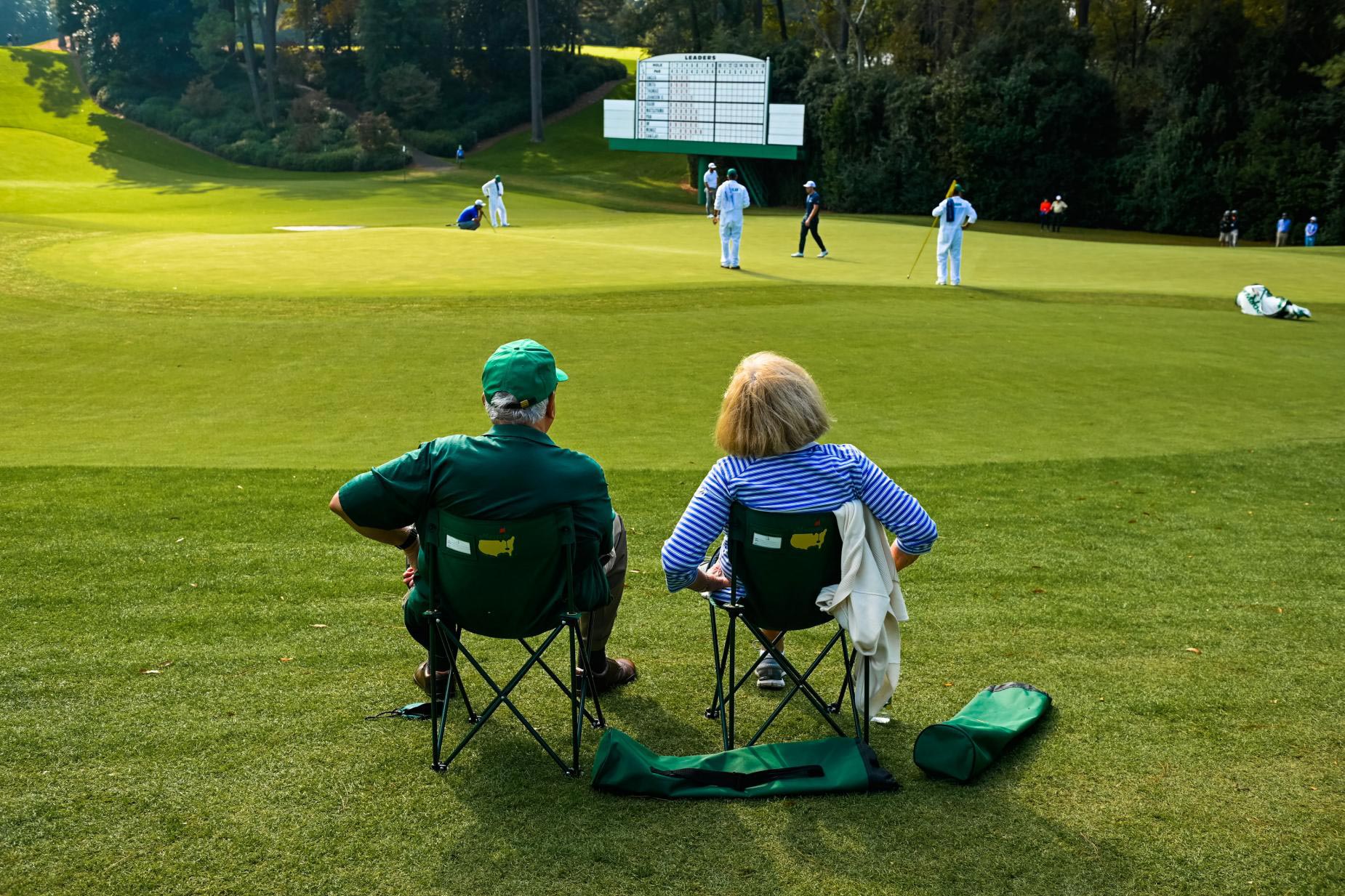
3. Tiger Woods opened with a four-under 68 that really should have been a bit lower. But his chances of winning a sixth Masters may have died before he struck his first tee shot.
Allow me to explain. Woods still has the game to win Majors. By that I mean: he can still hit all the shots. Watch him on the range, or in a practice round (when it’s warm outside). He’ll even throw in little spurts like the one on Sunday, when he played Augusta’s last six holes in five-under for the first time ever. The raw materials are there.
But having the raw materials isn’t enough. So much needs to go right for Woods to win these days. The course needs to be right. He needs to be on the right side of the draw. He needs to have four good body days in a row, which is far from a guarantee. And he simply cannot afford to have a disruption like the thunderstorm that delayed play on Thursday morning. With the shortage of daylight in mid-November, that three-hour delay meant Woods was going to have to play more than 18 holes on Saturday. The way it worked out timing-wise was awful: he had roughly an hour’s break between the last eight holes of his second round and the first hole of his third round – too much time to keep the foot on the gas, not enough time to do a full reset and restart the multi-hour process he needs to warm his body up.
Woods emerged from the clubhouse looking as stiff as an old rusty pogostick, and that was that.
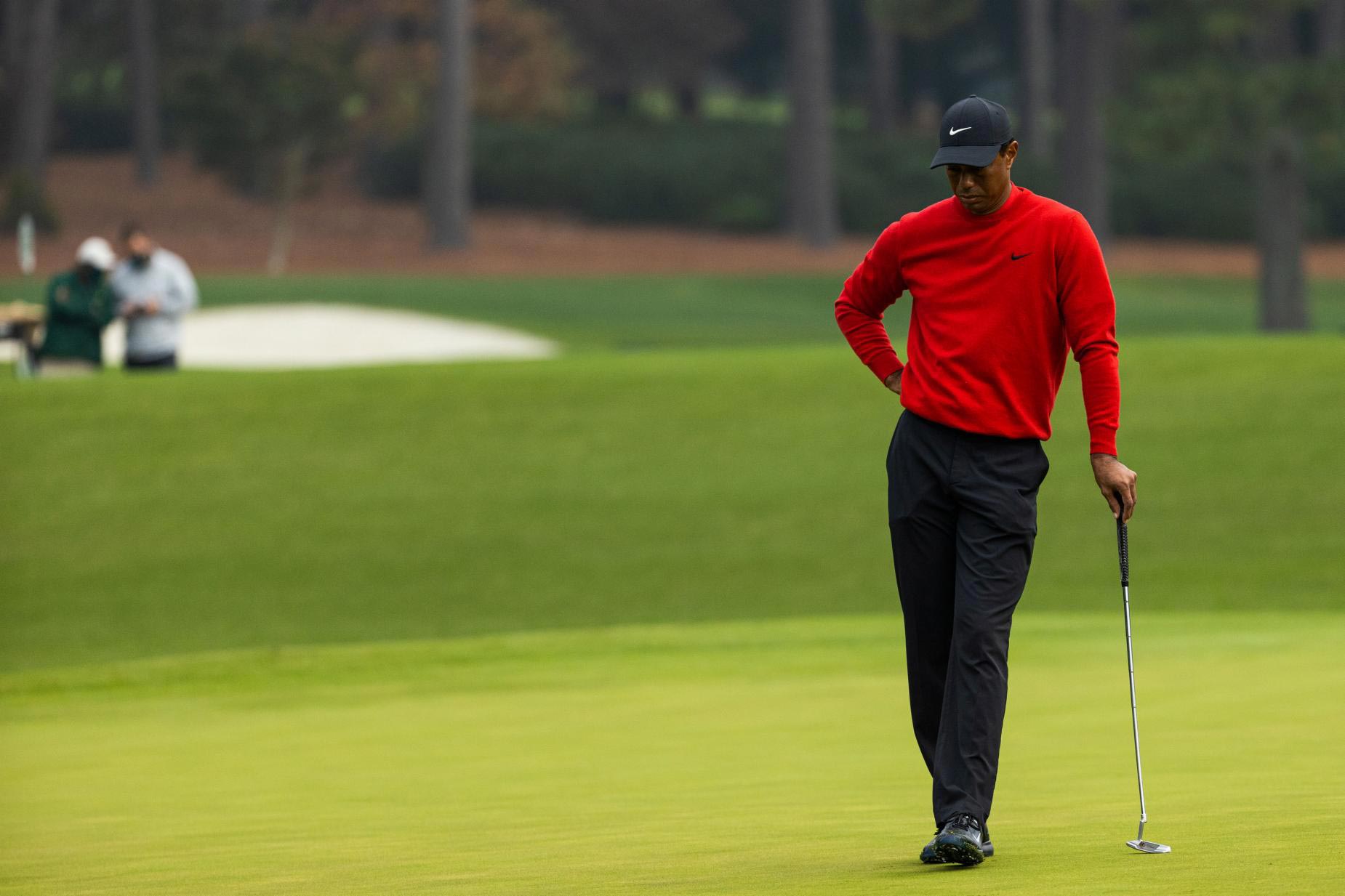
4. Woods played one of the strangest and, I’d argue, most poignant nine holes you’ll ever see on Sunday afternoon. He made a septuple-bogey 10 on the 12th hole, dumping three balls in the water and looking patently miserable doing so. It was the worst score on any hole in his career as a professional golfer. He then birdied five of his next six holes for no reason other than his otherworldly grit.
Grit – it’s a funny word. McIlroy said last week he thinks it’s the one thing all successful people share. In an attempt to define the word, he offered an impressive plate of synonyms: persistence, perseverance, doggedness. None quite did the trick because grit is one of those things where you just kind of know it when you see it. We saw it from Tiger Woods yesterday, and it’s just as big a part of his legacy as his iron play or his putting stroke.
RELATED: How Tiger turned a 10 and a 76 into an inspiring performance
• • •
5. Speaking of McIlroy – leave your Rory takes at the door, because we’ve heard them all: he tries too hard. No, wait, he doesn’t try hard enough. He plays too aggressively. No, actually, he doesn’t play aggressively enough. We have no idea which one of these is correct, and in all likelihood, neither does he. Sometimes a bad round, like the 75 he shot in the first round, is just a bad round.
Anyway, our only thought on McIlroy for the week: man, we need details on the pep talk Augusta National member/golf power-broker Jimmy Dunne gave him between his first and second rounds on Friday. “It was colourful,” is all Rory cared to share. What could Dunn possibly have said to motivate a guy with four Major championships? Did he take after Rory’s previous caddie, J.P. Fitzgerald, who famously asked his boss at the 2017 Open Championship: “You’re Rory McIlroy, what the f*** are you doing?” Did he make fun of his score, telling him that the old man shot 74 from the championship tees last Wednesday? Did he make fun of his haircut? The world may never know.
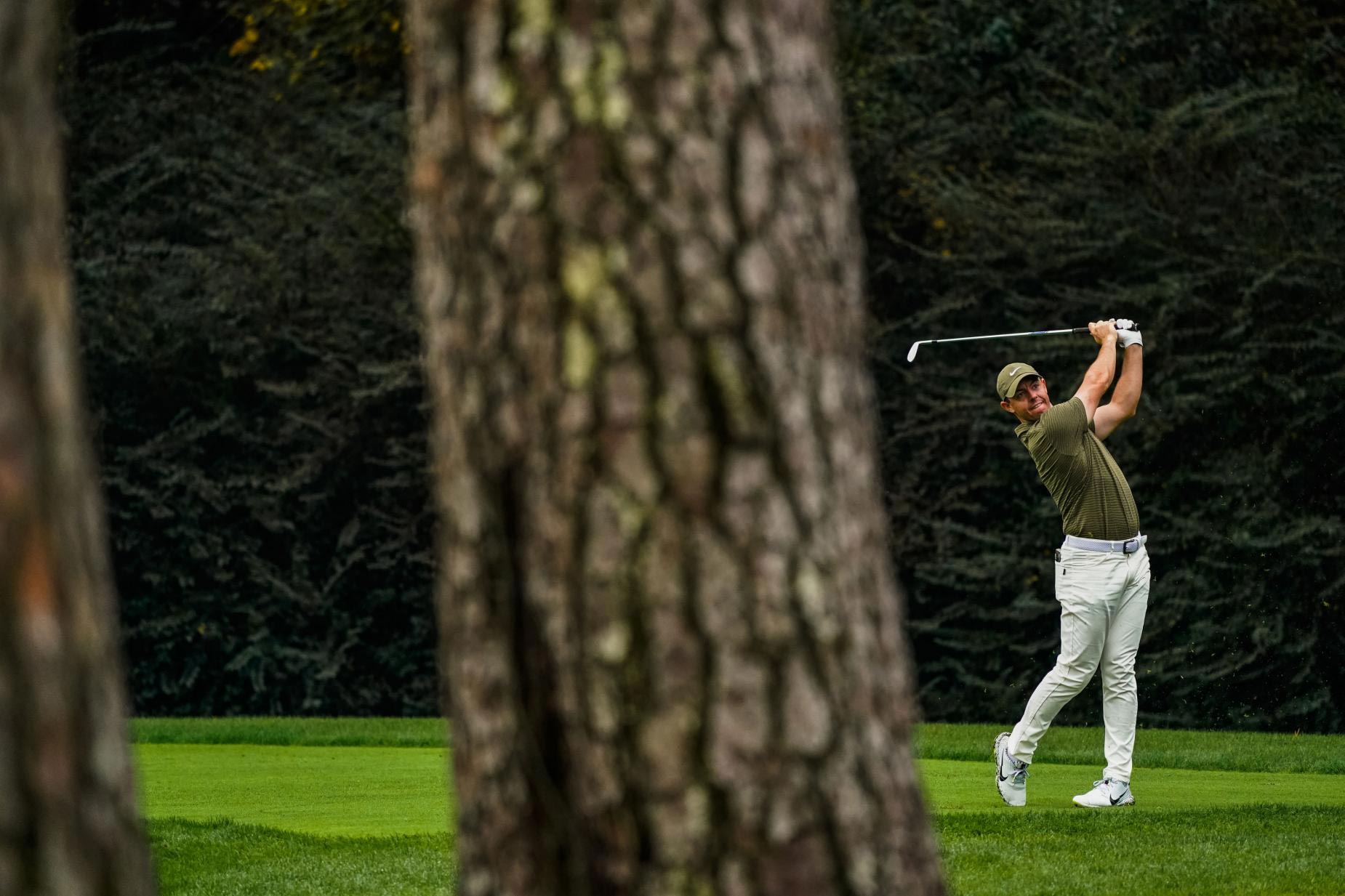
6. Big-time shoutout to Australia’s Cameron Smith, who became the first player in Masters history to shoot four rounds in the 60s… and he lost by five. Which brings us to the insanely low scoring this week. No, there is no asterisk next to Dustin Johnson’s victory. Yes, there is an asterisk next to the scoring record, whether you like it or not. Every time that record is brought up, we’ll think of just how soft the course was. I can already hear the announcers during the 2036 Masters: “John Futurestar is now within two of the all-time Masters scoring record of 20-under, set during that one-off November Masters played during the pandemic of 2020.”
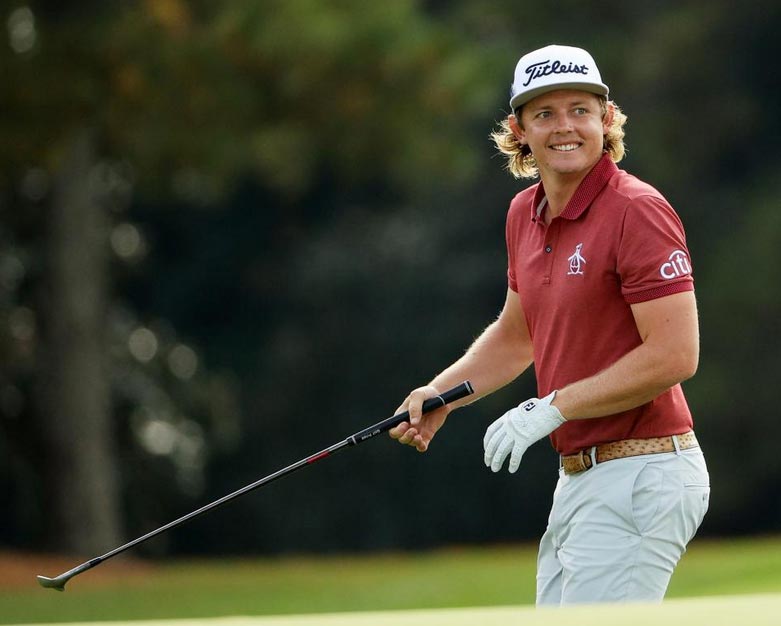
RELATED: The 9 records Johnson broke or tied at the Masters
Yes, this was an entirely different Augusta National that we likely will not see again; 4-irons were plugging on the greens all week. Balls that landed pin high to the back pin on the fifth hole stayed there, when in normal years they’d race into the bushes. Balls ripped back with spin on the third green. You could land a high cut into the right side of the 14th fairway, and it would stay in the fairway. Simply put, this wasn’t the Augusta we are all familiar with. That’s no fault of the club, of course. Weather is weather. But let’s not act like all 20-under weeks are created equal.
Jon Rahm summarised it nicely on Sunday: “I was talking with Patrick Reed and Sebastian [Muñoz] walking down the last few holes saying, it’s like you almost have to hit the delete button from what you learned this week because it’s never, ever going to play like that again.”
RELATED: Watch Cam Smith make the two most amazing birdies you’ll see at Augusta
• • •
7. Despite all this, in some odd ways the course still played tough. The back-nine par 5s didn’t get made into a total mockery, which was the fear going in. We shuddered at the thought of DeChambeau hitting wedges into them, wondered how long they’d have to extend these holes to make guys hit long irons and woods, like the old days. Granted, both did play quite a bit under par, but nothing outrageous. The 13th averaged 4.61, significantly higher than the all-time low of 4.546 in 2015. And 15 averaged 4.60, almost a tenth of a shot higher than the record-low 1991 average. For the most part, they functioned as risk-reward holes. Which, to some extent, is the idea. If you hit a bad tee shot, like Bryson did on the 13th on Thursday, you could make a double-bogey. If you missed the fairway – especially near the pinestraw right of 13, because there are more trees and thicker rough than there used to be – chances are, you were laying up. Johnson laid up on both 13 and 15 in the final round. Rahm laid up on 15 from the middle of the fairway on Saturday morning.
This isn’t to say the reckoning isn’t coming, that something is eventually going to have to change. But this time, the back-nine par 5s held up just fine. It wasn’t some sort of pitch-and-putt… though Bryson did hit 9-iron into 13 and make eagle in the final round, just to remind us the distance debate isn’t going anywhere.
• • •
8. There were no patrons this year, but there was a Peyton. Manning, a new-ish Augusta member, was ubiquitous. By all accounts, a genuinely very friendly guy who made no person feel insignificant. Very approachable. He followed Tiger and effortlessly chatted with a host of fellow green jackets, clearly comfortable in his surrounds. By the way: most of the members weren’t wearing the green jackets this year because, at least in theory, almost everyone watching the golf was an Augusta member. In reality, that wasn’t the case. There were media, and security, and volunteers. The way you could identify the lucky few: their belts. Green belts, with the Augusta National logo, without the word “Masters”.
Anyway, two things on former NFL star Peyton Manning. One, he’s a really big dude with rather narrow shoulders. The shoulders are really much narrower than you’re expecting. Two, I heard him say the word audible (in a non-football context) and it was, without exaggeration, the coolest thing ever.
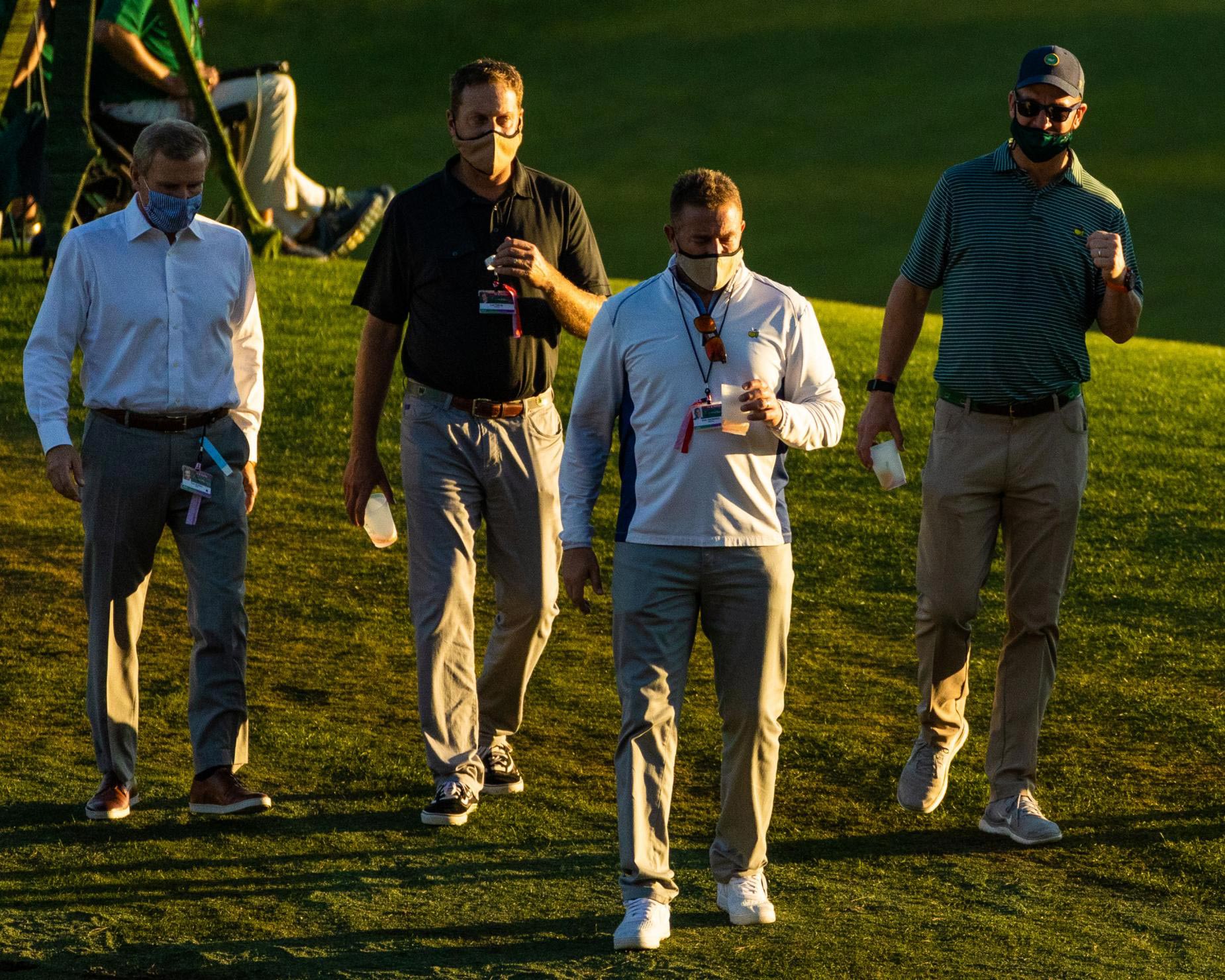
9. There’s so much talk about how Augusta National is the ultimate local knowledge course – about how you need to play it a number of times before you really understand it. That’s why, the conventional wisdom goes, no first-time Masters participant has won the green jacket since 1979. When something gets repeated that often, I always wonder if it’s a media creation and complete bollocks. But then I heard Shane Lowry’s response to a question about making the cut:
“I want to get two more rounds here just to learn. Just to keep learning how to play this place because I don’t have it figured out yet. I’m going to get a few more chances to come back here. This weekend is all about learning for me, and hopefully I can shoot a couple of good scores along the way.”
OK, noted. Local knowledge at Augusta is a very real thing.
• • •
10. The Masters is about so much more than the 90-odd players who tee it up. It’s more than the golf course and the members. So much of what makes the tournament the tournament are the unsung heroes, the people who work at Augusta National for one week a year. The shuttle drivers, always waiting with a smile on their face to transport you to and from the media centre. The baristas, who commit your latte to memory after the first time you order it. The janitors, who politely ask whether you’re finished with your water bottle. The golf course maintenance workers, who rush 15 deep as soon as the last group is off a hole to get it ready for the next day. The sheer people power, the number of folks grinding their tail off to make the event tick, is astounding, and they’re the friendliest bunch you’ll ever come across.
• • •
11. The third-round pairing of John Augenstein, Rory McIlroy and Bernhard Langer was everything that’s beautiful about Augusta National. A college kid, a global superstar and a 63-year-old whose game doesn’t seem to age, all posting the same score after 36 holes of the world’s most famous golf tournament. How can you not be romantic about the Masters?
• • •
12. While in the end McIlroy beat Langer by six, the elder statesman got the better of DeChambeau in the final round, besting golf’s brute force 71 to 73. Quite literally, the shortest-hitting guy in the field (who made the cut) beat the longest guy in the field. DeChambeau, to his credit took the whole thing in stride: “Definitely I still look up to him. Even though I’m bombing it by him, he’s still playing better than me. It doesn’t matter. That’s the cool part about the game of golf – you can shoot a score whatever way you want, and he’s still able to do it at his age that way, which is pretty impressive.” Couldn’t have said it better ourselves.
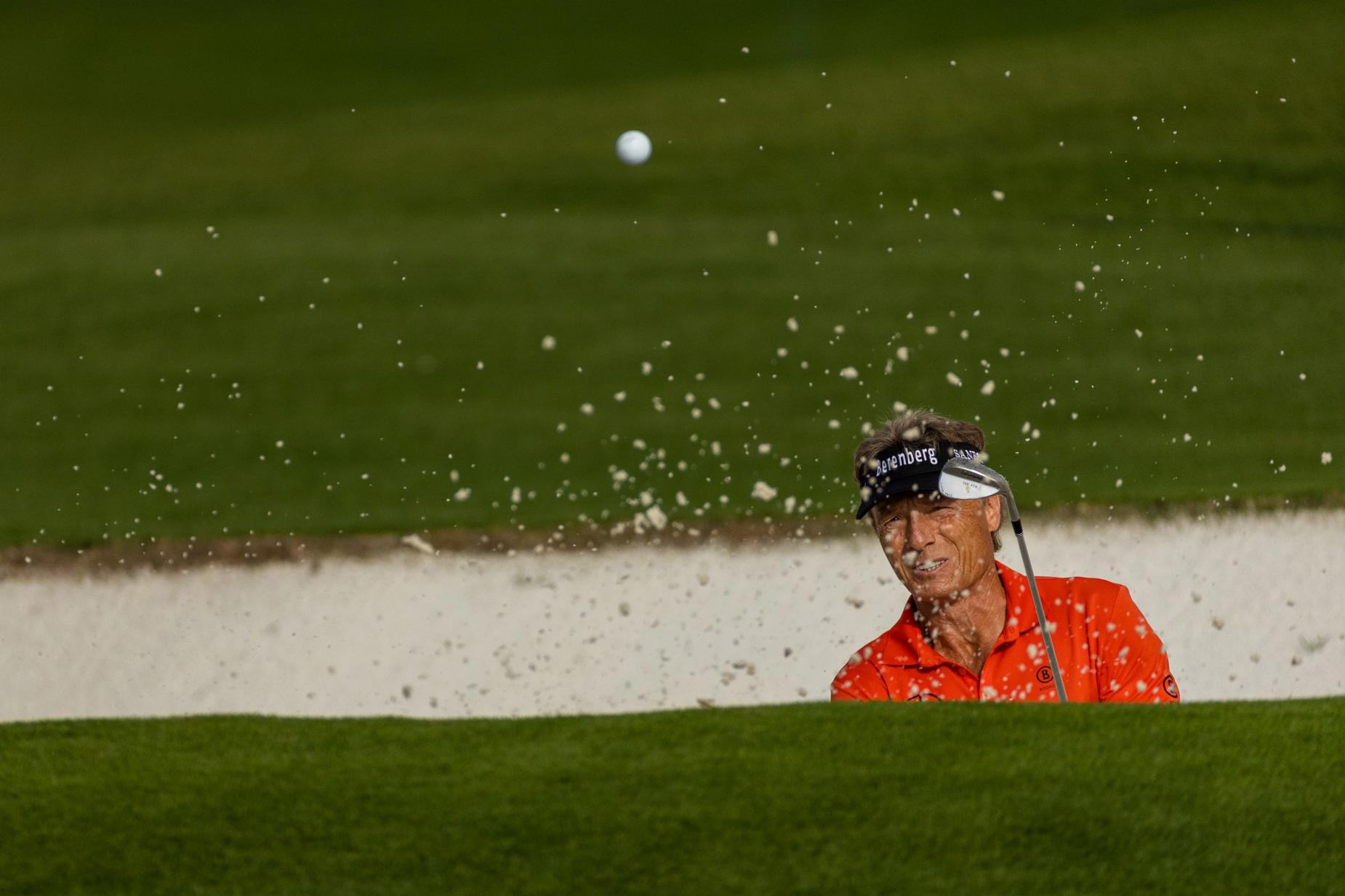
13. Augusta National’s history of inclusion is ugly. Really ugly. We’ve known this, and it finally seems like the club has decided to try to rectify it. In the past decade, Augusta has emerged as a true force for good in the game. They helped start the Asia-Pacific Amateur Championship and Latin American Amateur Championship and gave the winners an exemption into the Masters. They created the Augusta National Women’s Amateur, a monumental gesture for a club that didn’t admit its first female member until 2012. This year, they made three announcements that continued their outreach: adding Lee Elder as an honorary started for 2021; pledging to fully fund the women’s golf program at Paine College, a local HBCU (historically black colleges and universities); and, along with their sponsors, spending $US10 million to redevelop two struggling neighbourhoods in Augusta. Club chairman Fred Ridley deserves a stack of credit for overseeing a significant transformation in the club’s posture.
RELATED: Lee Elder named honorary starter for 2021 Masters
• • •
14. It doesn’t get the love of Amen Corner of the famous finishing holes, but for my money, the seventh is the most underrated hole at Augusta and maybe my favourite on the course. The tee is nestled way back in a pocket behind the sixth green, creating a chute-like claustrophobia that makes the drive uncomfortable. Trees frame both sides of the fairway. The hole looks straight as an arrow, but the fairway slopes from left to right and you want to stay left to give yourself a flat lie. The green is the second shallowest on the course (behind the 12th), so distance control is key, and long is dead. Plus, the visual of hitting the severely uphill approach over steep-faced bunkers filled with bright-white sand – one of the better approach shots to watch in all of golf.

15. I’m not sure who the actual mayor of Augusta is – the Google machine tells me it’s Hardie Davis Jnr – but Fred Couples sure seems like he is. He swaggers around the property, chatting with everyone within earshot and looking cool-as-can-be throughout it all. He’s Mr Congeniality, and Woods likes playing practice rounds with him so much that he generally lets Couples chose the times and the other players in the group. If Tiger likes you like that, you know you’re doing something right.
• • •
16. A note of condolence to Erik van Rooyen, the fashion king who played in his first Masters only to wake up on Friday morning with an out-of-whack back and have to withdraw. It was the first time in 163 career starts that the South African had ever withdrawn from a tournament. At 52nd in the world, he has some work to do to get back to the Masters next April and wash away that disappointing debut. Here’s to hoping the golf gods step in here and grant van Rooyen some luck in the near future.
• • •
17. That was an all-time low-key top 10 from Corey Conners. The Canadian shot a closing 69 to tie for 10th, and I’m not sure we saw a single shot of his on the broadcast all weekend. It brought to mind Chez Reavie’s T-3 at the 2019 US Open at Pebble Beach, another insanely under-the-radar performance. The good news: the prizemoney’s still the same, whether they showed every one of your swings or none at all. And the top 10 gets him an invite for 2021.
RELATED: Complete 2020 Masters coverage
• • •
18. Only 143 days remain until the next Major championship, which is also the Masters. Until then…


